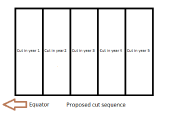




When's the best time to plant a tree? About 20 years ago. When's the next best time? Today!




Our Microgreens: http://www.microortaggi.it




William James wrote:Another question could be about the layout of the land.
William
William James wrote:Another question could be about the layout of the land.
A lot of time and energy can be saved by laying things out on contour, and it just takes a couple days of surveying.
Much in the same way, pre-planning soil biology interventions and even a small amount of earthworks (could be just running a plow above new plantings on contour) could create an end product that harmonizes with the landscape rather than viewing it as a grid.
A lot of people investing in land want to know what it is going to cost them in terms of time and money, so spending time getting those numbers right might make people feel more at ease. I have come to the awareness that you Time/Money/Quality are in proportion to one another and it's nearly impossible to have the best of all three. If you know that going into a project it helps make your decision making more accurate.
William
When's the best time to plant a tree? About 20 years ago. When's the next best time? Today!





David Wood wrote:
Agroforestry practice in SE Australia at least is moving away from ripping/mounding etc before planting trees. We've planted all our trees either directly as seeds or using a Hamilton planter initially and mostly a And I haven't seen any site results indicating that keyline is useful in high rainfall areas. One relatively formal study on keyline in a higher rainfall area in the US found no benefit for soil health, at least.
Our Microgreens: http://www.microortaggi.it




When's the best time to plant a tree? About 20 years ago. When's the next best time? Today!

|
Because ice cream has no bones. But feel this tiny ad:
Homestead Pigs Course
https://permies.com/wiki/365748/Homestead-Pigs
|





